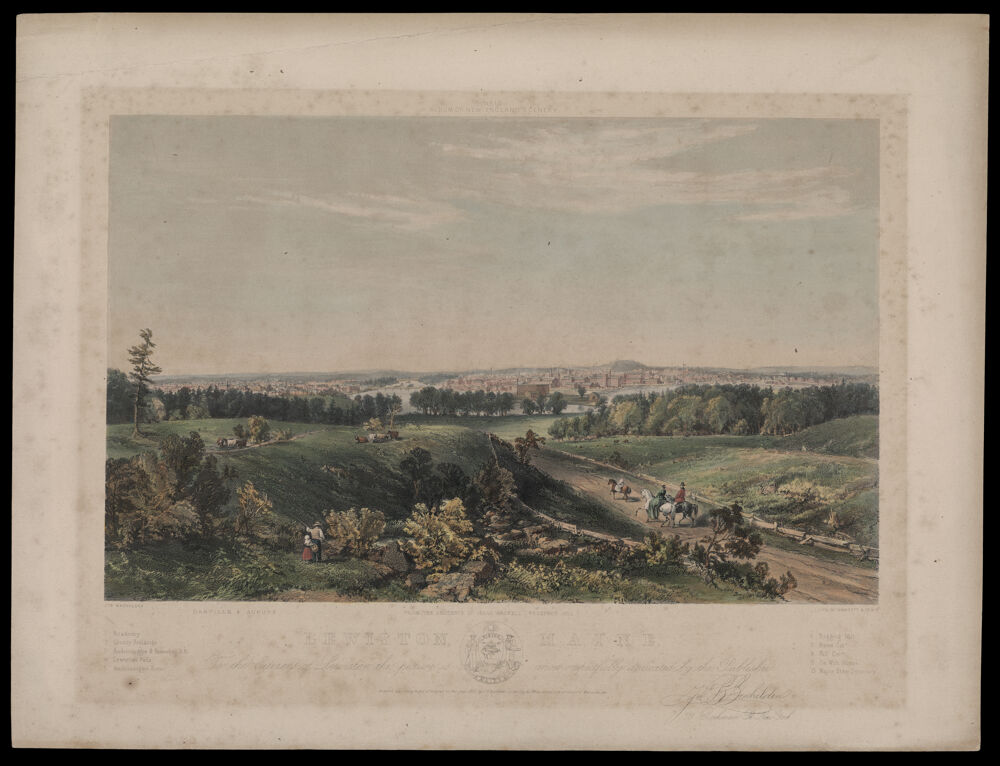
17. Lewiston, Maine
John Badger Bachelder , 1856

Click on image to see larger version.
This colored lithographic view of the countryside of Lewiston, Maine, from the viewpoint of Prospect Hill, shows pastureland, grazing cattle, and horseback riders. In the distance, but positioned purposely in the center of the view, is the Androscoggin River, and the large mill buildings representing the developing textile industry that transformed Lewiston from an agricultural town to a booming industrial city. The dedication reads: “To the citizens of Lewiston, this picture is most respectfully dedicated by the publisher J.B. Bachelder.” Like the Saco-Biddeford view, also on view in the gallery, Bachelder included Lewiston in his Album of New England Scenery.
Such idealized views of bustling mill complexes in pastoral locations were common in this era. While these images appear to show the new industries fitting seamlessly into the countryside, they fail to show the numerous environmental implications of the growing industry on the natural landscape–among them smoke filled skies, dammed and polluted rivers, and newly dug canals and railroads.
18. Bates Manufacturing Company “Hill Division” Surveyed in 1949
[unknown author], 1949

Click on image to see larger version.
This survey of the Bates Manufacturing Company’s Hill Division, as conducted on May 19, 1949, consisted of a plan of the buildings with dimensions and cross section elevations showing the functions of different floors and rooms. Also included is a brief description of property, power, stock and product, water sources and fire protection.
19. Bates Manufacturing Company “Androscoggin Division” Surveyed in 1949
[unknown author], 1949

Click on image to see larger version.
Like the Hill Division plan (displayed in the Lewiston-Auburn section of the exhibition), the Bates Manufacturing Company’s Androscoggin Division was surveyed on May 19, 1949. This site along the Androscoggin River, was first developed in the 1860s as the Androscoggin Mills, and produced cotton textiles. By the early 20th century, the number of buildings had expanded to encompass four mill buildings, two picker house buildings and a number of other connected buildings. It subsequently became part of the large Bates Manufacturing Company which ultimately changed Lewiston from an agricultural town to a booming industrial city.